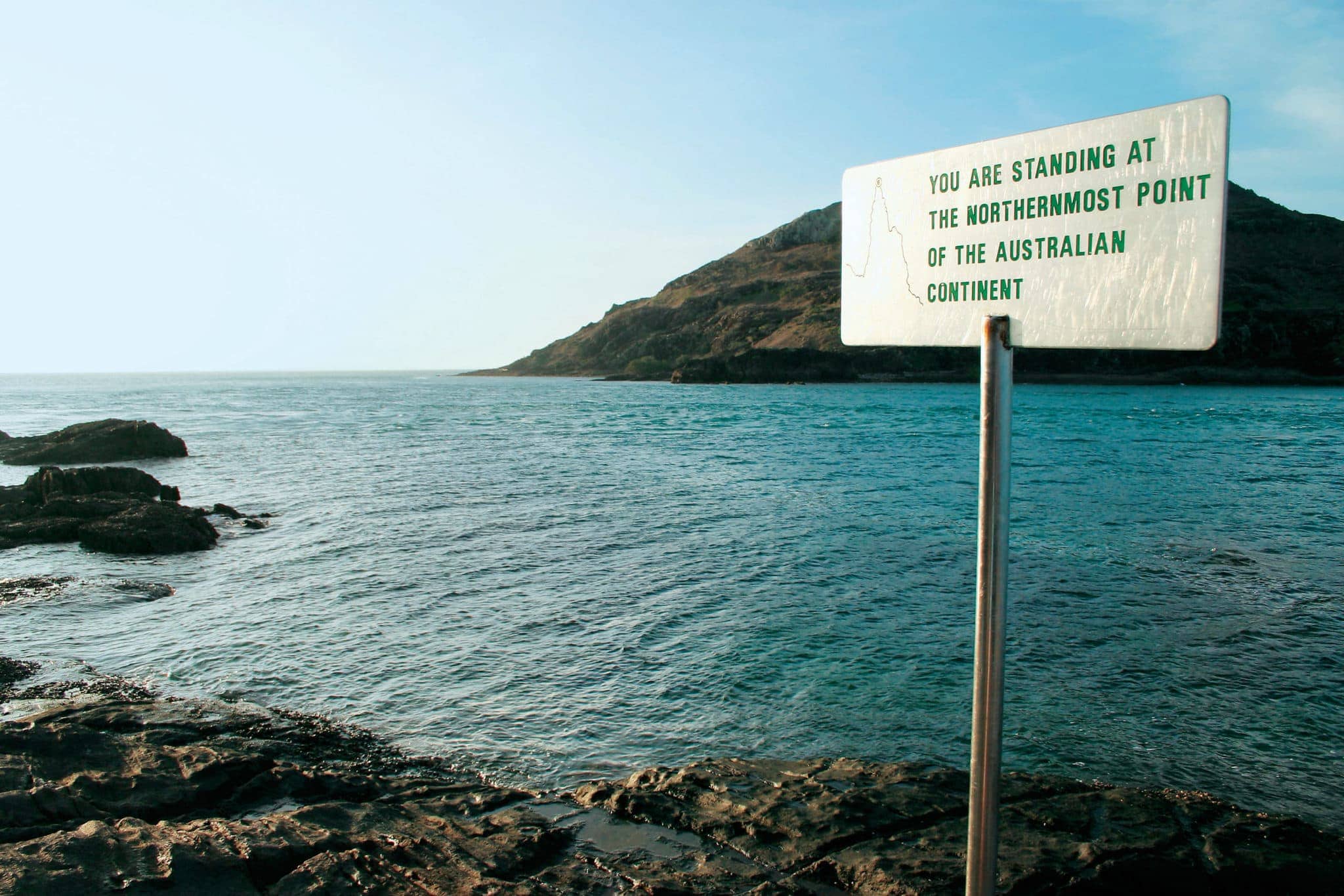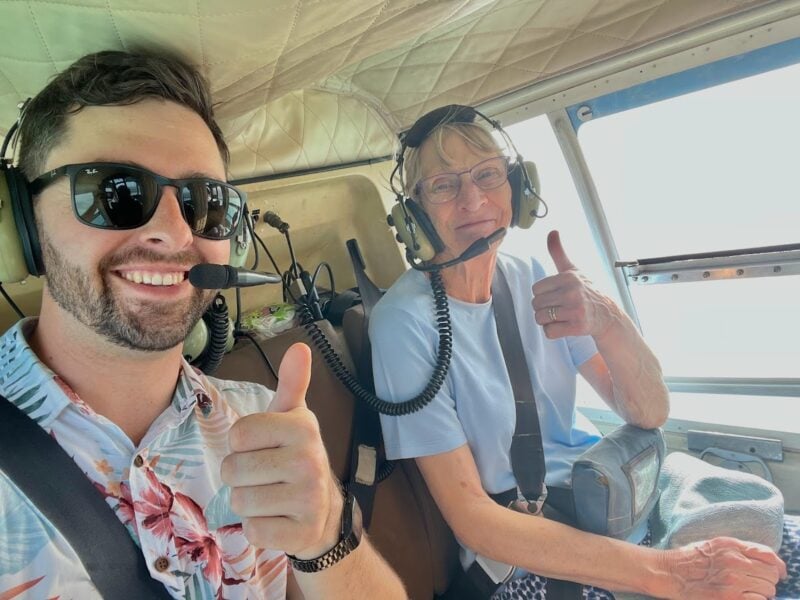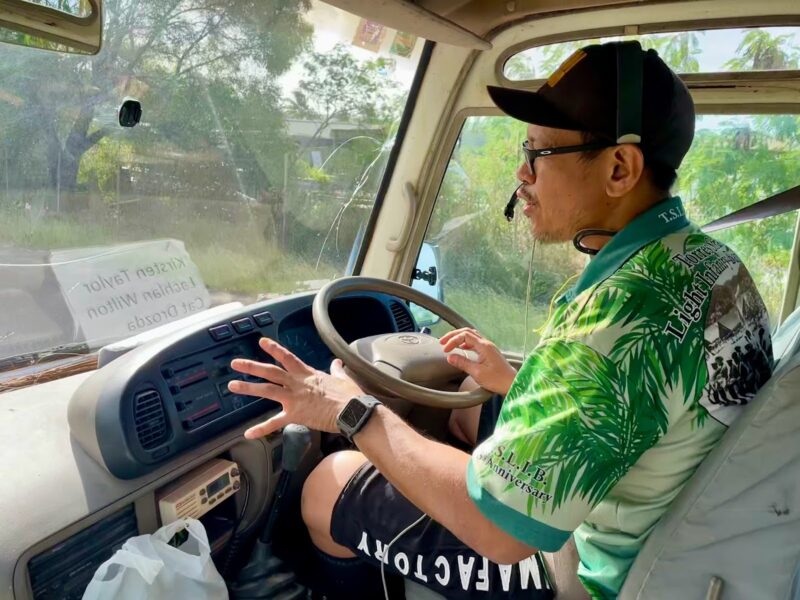Seeing Cape York on an Air Tour
By Nick Stobie - Touring Pilot
Cape York Safari has been one of my favourite trips for the past couple of years. I've been lucky enough to lead seven trips up the Cape over the past three years, and it's one of those parts of the country that I love going back to again and again.
Among the guests I've travelled with, one of the big 'bucket list' items on this trip is actually standing on the tip of Cape York. It's almost a bit of a pilgrimage, and after the modest hike from the road itself over to the tip, there's certainly satisfaction on everyone's faces as we take that group photo by the sign.
Coming into the trip, this is the moment everyone looks forward to. But after the trip - a really common piece of feedback is that the whole experience of seeing Cape York from the air was really what made it so special for them. We start right down the bottom in the gulf and make our way up the western side of the cape, watching as the width becomes smaller and smaller until finally the tip comes into view as we approach Horn Island.
The stops along the way are also, in and of themselves, fantastic destinations that are an essential part of seeing Cape York, even though they rarely get the same attention as the tip itself.
I'd like to share three destinations on our Cape York Safari that, in my opinion, really make this trip special.


Karumba, Queensland
Karumba is a real hidden gem on this trip, and it's a spot that most of our guests have never heard of let alone been to. Located at the bottom of the Gulf of Carpentaria, the town itself sits on the Norman River.
Karumba is a fishing town, and its fleet of 52 boats are now responsible for a decent proportion of Australia's catch of Bannana Prawns. Bannana prawns have a lighter colouring than other prawn varieties and are known their sweeter flavours. Karumba was also home to a flying boat base in World War II, and the launching ramps along with quite a few original buildings still remain today.
Sunset Cruise
The highlight of our visits to Karumba is the Sand Island Sunset Tour with our friends at Croc and Crab Tours. Boarding their boat in the late afternoon, we take a scenic cruise up the Norman River to see the main town before heading north into the Gulf to arrive at a sandbar a couple of kilometres off the coast. The first drinks don't come out until we're out on the sandbar, so I like to joke that they need to wait until we're in international waters before serving us alcohol.
Once we get out onto the sandbar, a couple of minutes of exploring the 'island' gives the team time to setup nibbles and drinks, including buckets of local bannana prawns (and I do mean buckets, there's no supply shortage). I'm more partial to a beer out here, but there's bubbles and soft drinks on offer too. And just as well, it'd be a crime to watch that sunset without a drink in hand.
Horn and Thursday Islands, Queensland
Horn and Thursday Islands have an amazing history, and its this history that makes visiting them so special. Back in World War II, these islands were key bases for the Army and Air Force in their defence of Australia against invasion from the north. The islands today remain littered with relics of this era, from the the gunnery placements of Green Hill Fort on Thursday Island through to the wrecks of B17s and Beaufort bombers on Horn Island adjacent the airfield.
Vanessa and Liberty Seekee
Vanessa Seekee is our local guide on Horn Island and has dedicated much of her life to preserving and memorialising the history of service to the armed forces that the islands have given. She's been on the island now for more than 30 years, and along with her husband Liberty, they operate Torres Strait Herritage Museum. Among her passions is recognition of Torres Srait Islander servicemen who didn't receive the same rights and acolades as other servicemen at the time.
Vanessa has been closely involved in the restoration of an anti-aircraft gunnery base that we're now lucky enough to see on our tours. I'm always amazed hearing about how the gunnery teams worked together, with spotters, calculators and gunners working together to accurately lead their shots - anticipating where the aircraft would be in the seconds it took for the shell to reach the altitude of the aircraft.
We also get to visit the wrecks of several aircraft on the island, some of which have only more recently been uncovered having been burried in creeks and forest for more than 70 years.



Cooktown, Queensland
Cooktown is named of course after James Cook, who arrived in what is now Cooktown after damaging his boat, HMB Endeavour, on the Great Barrier Reef. The location provided safe harbour for the vessel as his team made repairs, eventually continuing northbound seven weeks after landing.
Cooktown has an amazing history, from the goldfields era in the late 1800s, to World War II where is functioned as an airbase through to today where it has become an outstanding destintion for tourism. The natural beauty of the area, combined with the town being a great stopover for those headed up Cape York, make it a great stop as we head south on our air safari.
Cooktown Museum
Originally a school building constructed by the Sisters of Mercy convent, Cooktown Museum today pays tribute to the rich history of the area. It houses an original anchor and canon from HMB Endeavour as well as detailing Cook's voyage up the north-east of Australia. The museum is fantastic at explaining the story from both Cook's perspective but also that of the Guugu Yimidhirr peoples, the traditional owners of the lands of what we know as Cooktown.
The museum also details what life over the past two centuries has been like in Cooktown, paritculary in the era of the Sisters of Mercy convent whcih was completed in 1889.
Sunset cruise
Cooktown is set on the Endeavour River, named of course after Cook's vessel that sought refugee in it. The river provides stunning views of both the town itself but also access into the mangroves that surround Cooktown.
Nick and the team at Riverbend Tours host us for a stunning sunset cruise complete with gourmet cheese platters and really insightful commentary on the area as it is today. A couple of drinks as the sun goes down before traversing the mangroves under spotlight - keeping a lookout for any crocodile eyes staring back at us as we return to shore.




About the author
Nick is Australian Air Safaris' Chief Pilot and has flown over Lake Eyre more than 40 times with tour groups. He has extensive experience flying in remote Australia, and has flown for Australian Air Safaris for more than 7 years. Nick previously worked for the Royal Flying Doctor Service flying aeromedical retrieval in Western Australia.

